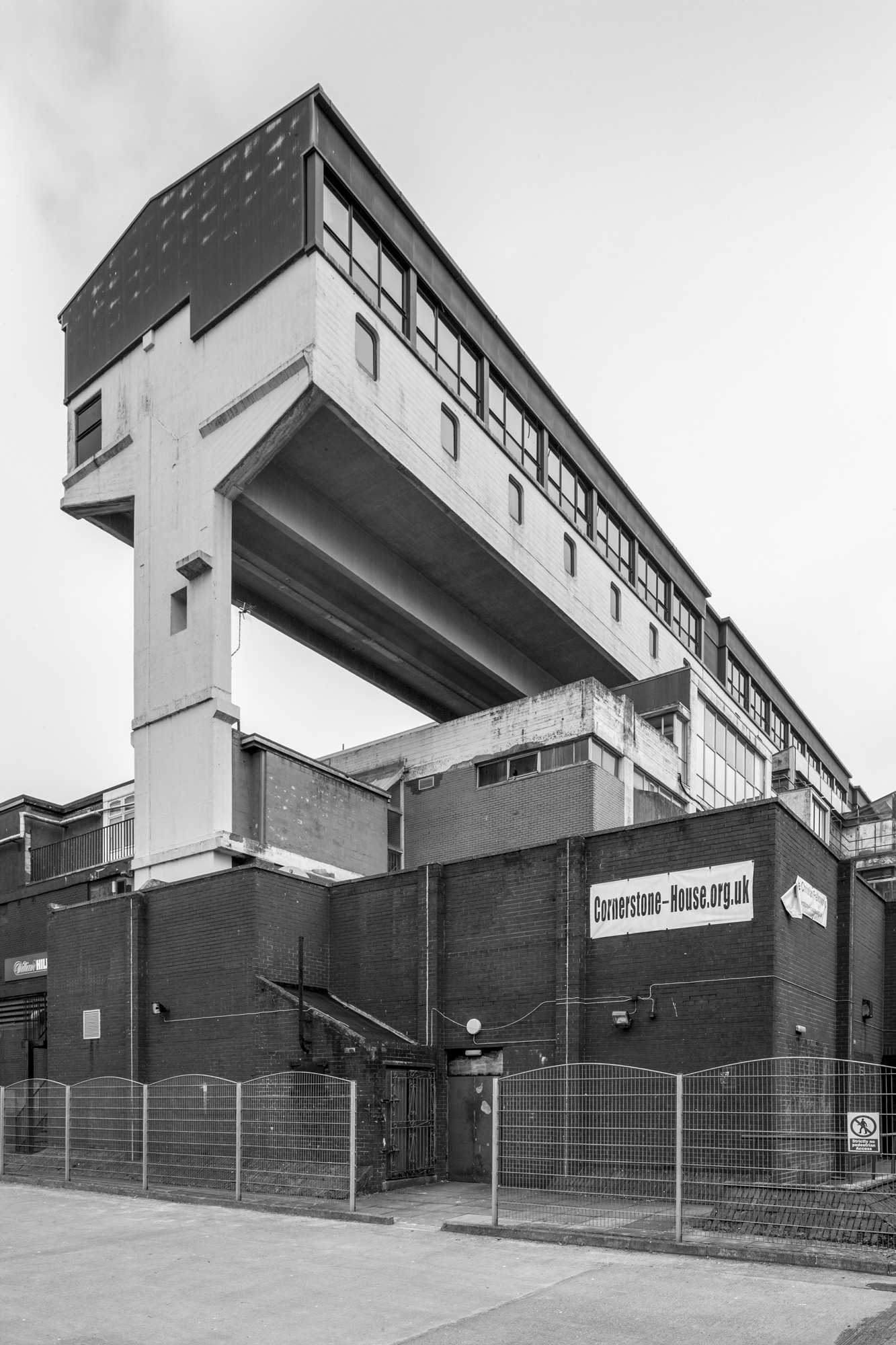Geoffrey Copcutt
Cumbernauld
1963-67
Cumbernauld was designated as a new town in December 1955,part of a plan, under the New Towns Act 1946, to move 550,000 people out of Glasgow and into new towns to solve the city’s overcrowding. Construction of its town centre began under contractors Duncan Logan, chief architect Leslie Hugh Wilson and architect Geoffrey Copcutt (until 1962 and 1963), and later Dudley Roberts Leaker, Philip Aitken and Neil Dadge.
Phase 1 lasted from 1963 to 1967. The idea was to create a megastructure, in the brutalist style, to accommodate a town of 50,000–80,000 people, although architecture historian John R. Gold notes that the term megastructure was first coined in 1964. Regarded at the time as a “milestone in urban design,” the centre would be surrounded by high-density housing without shops or other amenities, with each neighbourhood connected to the structure by pathways so that residents could easily walk there. Architectural critic Wolf von Eckardt wrote in Harper’s in 1965:
“Leonardo da Vinci, nearly five hundred years ago, envisioned a city where all the vehicles move underground, leaving man to move freely in the sun. Leonardo might also have sketched Cumbernauld’s town center, a soaring citadel surrounded by meadow.”
Princess Margaret and Lord Snowden opened the centre on 25 May 1967. Built over a dual carriageway, it housed shops, a hotel, ice rink, bowling alley, health centre and penthouse apartments, as well as police, fire and ambulance stations. There was also a library and technical college. Historian Rosemary Wakeman called it a “colossal living vessel” intended to “elicit new codes of community behavior.” According to an Open University website, it was a “strange tribute to a moment when it was thought that old cities, with their narrow streets, haphazard layout, and confused, illogical centres were a thing of the past.”
